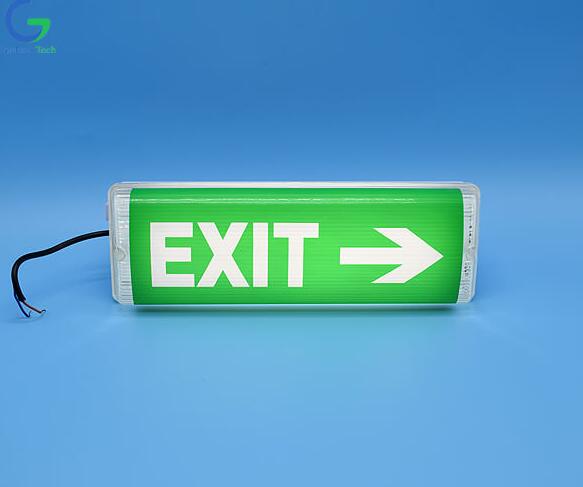Emergency lighting is a type of lighting with a battery pack that turns on automatically when the building loses power. But do you know where to install them in your building? If you are working on a new construction project or making extensive changes to the interior of a commercial building, make sure you follow the applicable rules and regulations regarding the installation of emergency lighting.

The purpose of emergency lighting is to ensure that adequate lighting is provided in the event of a failure of the power supply for normal lighting. In the event of a fire or other emergency in a commercial building, emergency lighting helps people get out as safely and quickly as possible. Emergency lighting illuminates exit routes, including stairs, aisles, corridors, ramps and escalators leading to exits, to ensure that everyone is evacuated to safety.
Some common places to install emergency or exit lighting include:
◭ Windowless rooms larger than a broom closet
◭ Stairs designated as emergency exits
◭ Aisles or hallways leading to exits
◭ Ramps leading to exits
◭ Escalators leading to an exit
◭ All exit points to areas open to the public
◭ Doors equipped with delayed exit locks
◭ Doors with new sensor-release electronic locking systems
◭ Commercial, industrial, institutional, educational, religious, medical and many other building types often require emergency lighting.
◭ Emergency lights must be spaced correctly to prevent spots of excessive light and darkness.
◭ Sometimes allowance can be made for large window areas that provide high levels of natural light.
◭ Remember that lights must be properly aimed to illuminate the sidewalk. Bulbs pointing toward the ceiling or walls do not meet code requirements, even if they are installed in the correct location.
◭ The building is used only during daylight hours if sufficient natural light is available to provide the required level of illumination. Natural light must illuminate all paths to exits.
◭ Structures that are infrequently occupied.
◭ Towers that can accommodate up to three people at a time and provide escape ladders.
Because people rely on emergency and exit lights to safely guide them out of dangerous situations, it is important to ensure that the system is functioning properly by testing it regularly. In fact, by not following the necessary testing guidelines, you not only risk the building's occupants, but also violate life safety codes designed to prevent emergency lighting failures.
It is important that trained fire and life safety technicians follow the following monthly and annual maintenance schedules to ensure that emergency and exit lights are working when they are needed
◭ Ensure emergency lighting is installed according to code
◭ Inspect equipment for physical damage
◭ Perform the required 30-second push test switch
◭ Check the lights and make sure they are properly aimed
◭ Conduct a complete inspection of the unit
◭ Complete the required 90-minute test of the battery and lighting system
◭ Check the condition, voltage and manufacture date of the batteries
◭ Check AC/DC lamps or bulbs for damage and proper operation
◭ Ensure proper operation of charging circuitry
◭ Label each lamp with an emergency lighting test label after the annual test is complete
When an emergency or power outage affects your business, it's important to have reliable emergency lights and clearly marked exits. It is equally important to understand the installation, testing and maintenance requirements set by state and local authorities to ensure that all emergency lights and egress lights continue to work properly.

 Ni-MH Battery C4700mAh 3.6V
Ni-MH Battery C4700mAh 3.6V Nickel Cadmium Nicd Battery Pack SC1800mAh 3.6V
Nickel Cadmium Nicd Battery Pack SC1800mAh 3.6V Ni-Cd Battery Pack D4000mAh 3.6V
Ni-Cd Battery Pack D4000mAh 3.6V Ni-Cd Battery Pack C2500mAh 3.6V
Ni-Cd Battery Pack C2500mAh 3.6V NICAD Battery Pack AA900mAh 3.6V
NICAD Battery Pack AA900mAh 3.6V LiFePO4 IFR18650 1600mAh 3.2V
LiFePO4 IFR18650 1600mAh 3.2V LiFePO4 IFR18650 1600mAh 6.4V
LiFePO4 IFR18650 1600mAh 6.4V Ni-MH Battery C4000mAh 3.6V
Ni-MH Battery C4000mAh 3.6V E-bike Battery 48V 10Ah JL-1
E-bike Battery 48V 10Ah JL-1 E-bike battery 48V 10Ah Qing Tian
E-bike battery 48V 10Ah Qing Tian